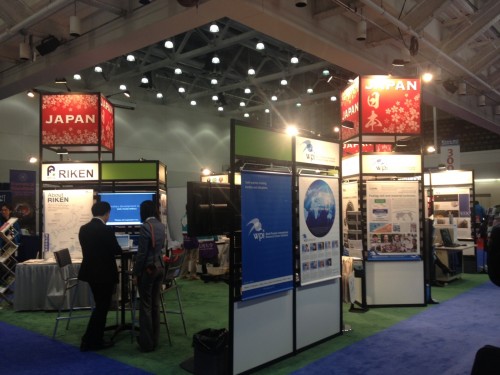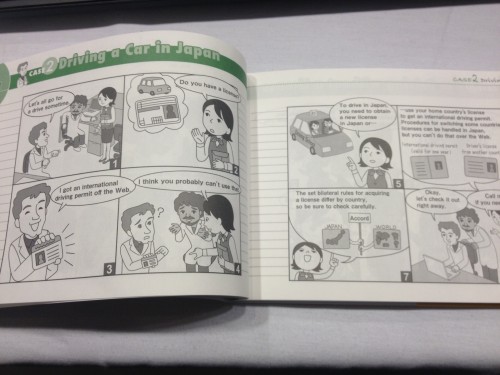
Stand from Japanese research bodies at the 2013 AAAS meeting.
By Michael Banks in Boston
There is certainly a big presence from Japanese research bodies at the 2013 AAAS meeting in Boston.
In the exhibitors’ hall, the World Premier Institutes (WPI), RIKEN and the Okinawa Institute for Science and Technology all share a large central stall plugging their research and facilities.
Indeed, this presence may well be part of Japan’s drive to increase the number of foreign researchers and students in the country by actively highlighting its top research and facilities, a topic Physics World touched upon in a special report published last September.
After a brief chat at the WPI’s stall, I was handed a book called The Challenging Daily Life, which is published by the WPI’s International Center for Material Nanoarchitechtonics (MANA).
The 136-page book, featuring Japanese-style cartoons, introduces problems that foreigners in Japan come across in their everyday lives, and gives information and hints about how these problems can be solved.
The book features 34 different “episodes” – all based on real experiences of MANA staff – such as the “nightmarish bad weather” in Japan or how to deal with an invitation to a wedding.
My favorite case study, though, is “don’t overeat”, which seems to basically tell people that if you eat too much you will get fat and that while Japanese food is healthy, eating too much will result in weight gain.
I guess as long as it plays a role in making researchers from abroad more comfortable in Japan then it will have done its job.

Guidelines
Show/hide formatting guidelines
this text was deletedwhere people live in harmony with nature and animals</q>
Some text